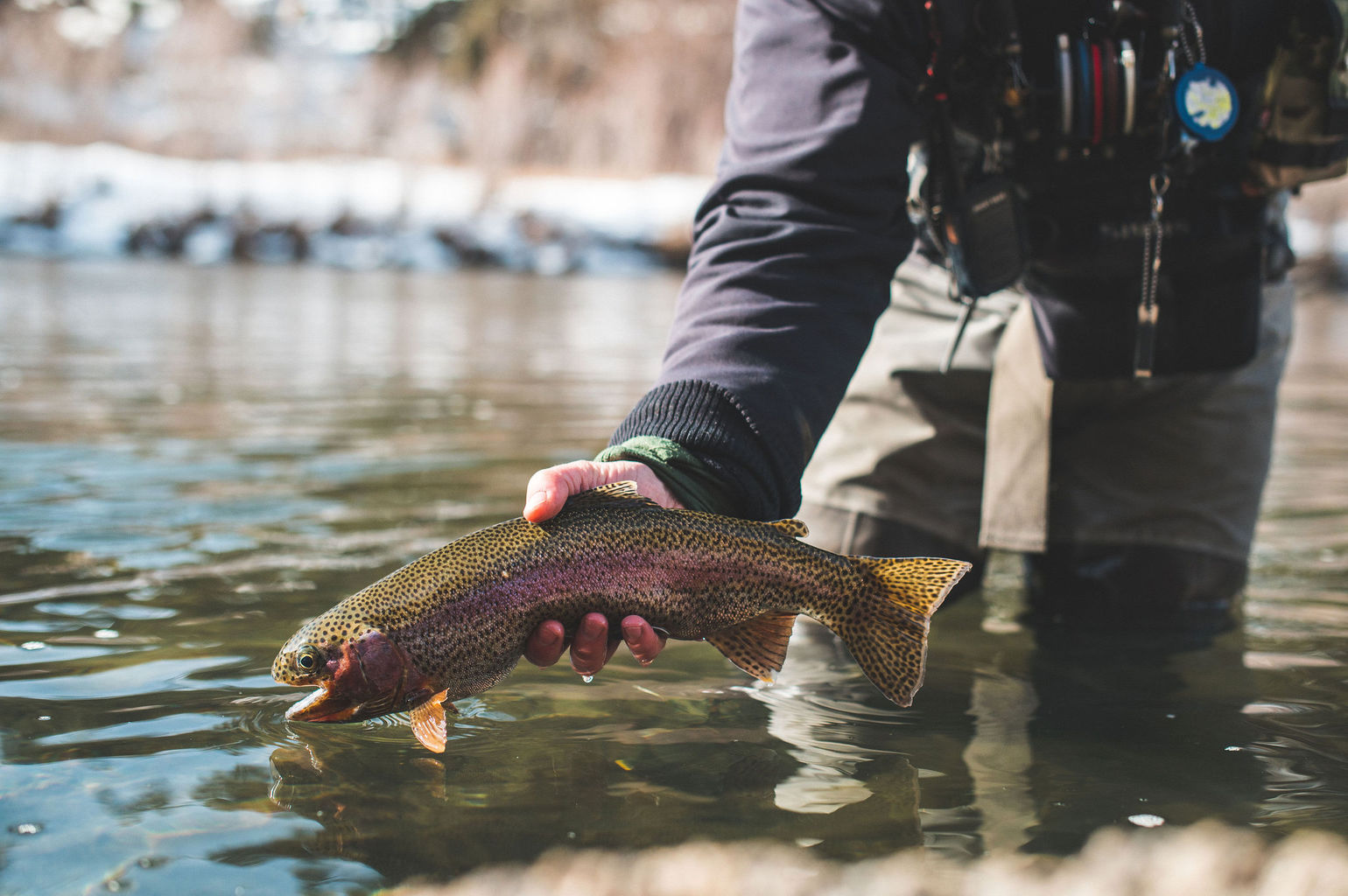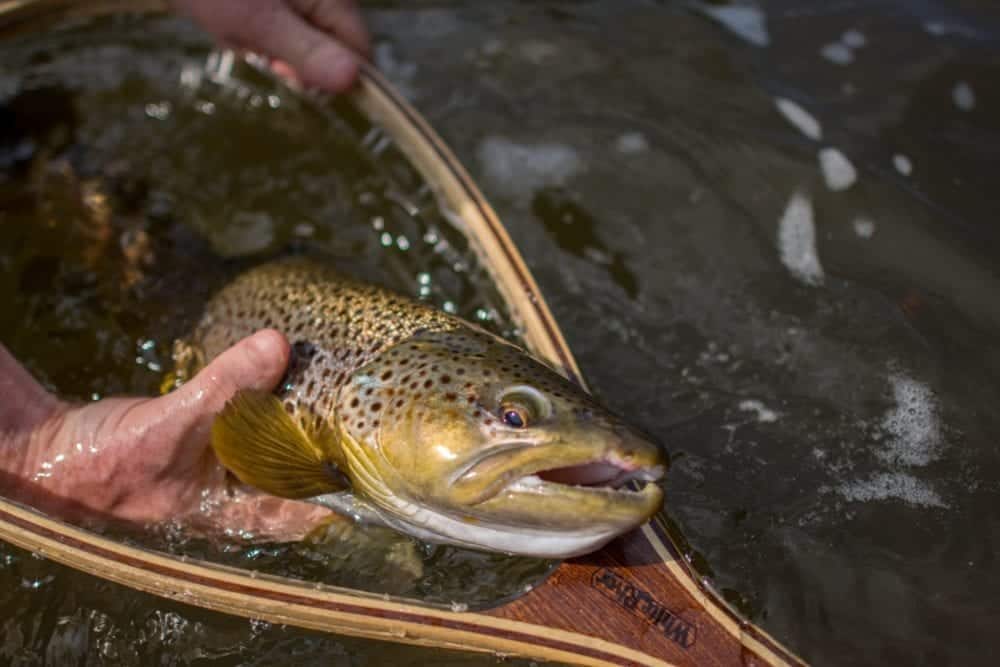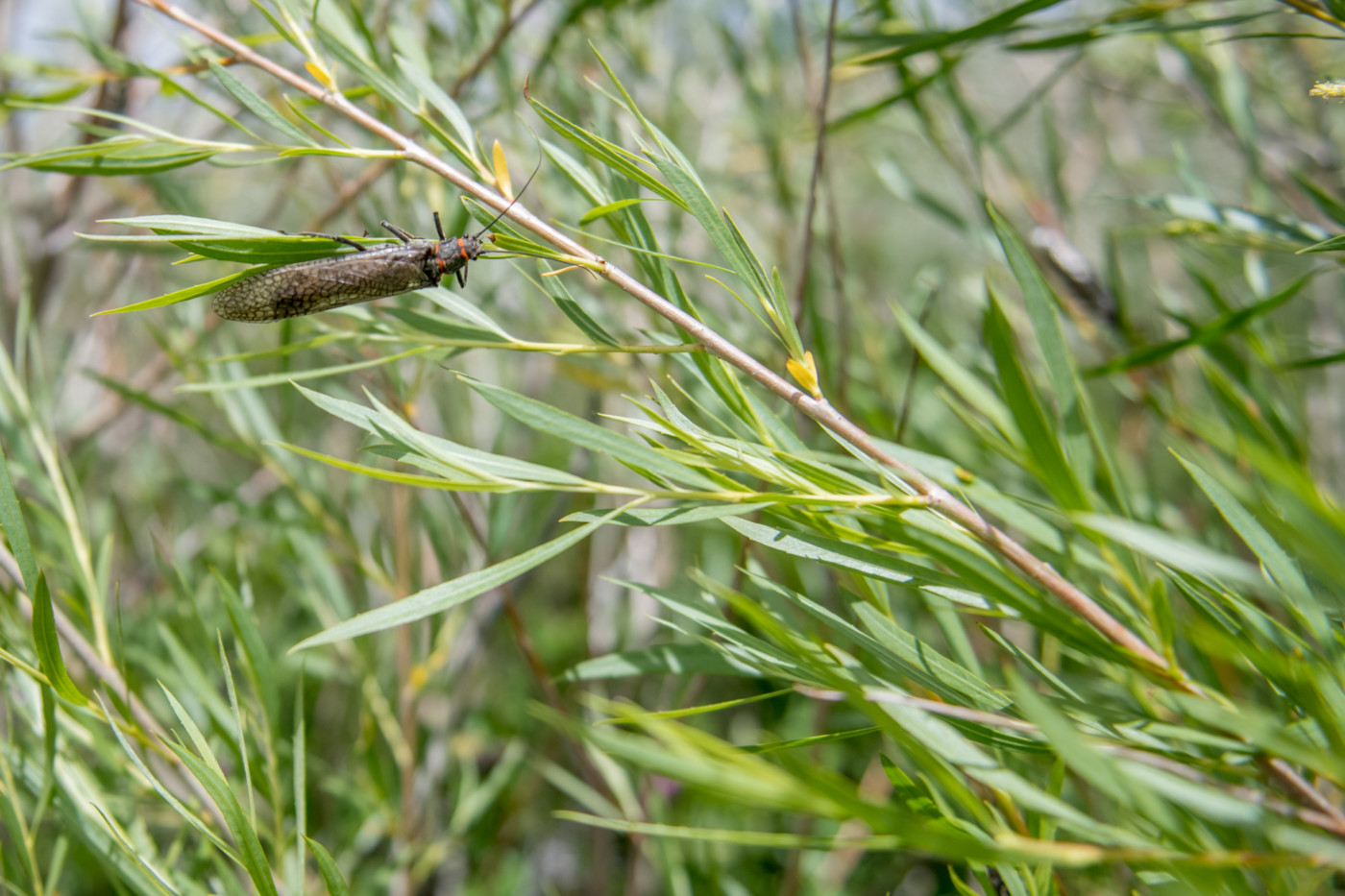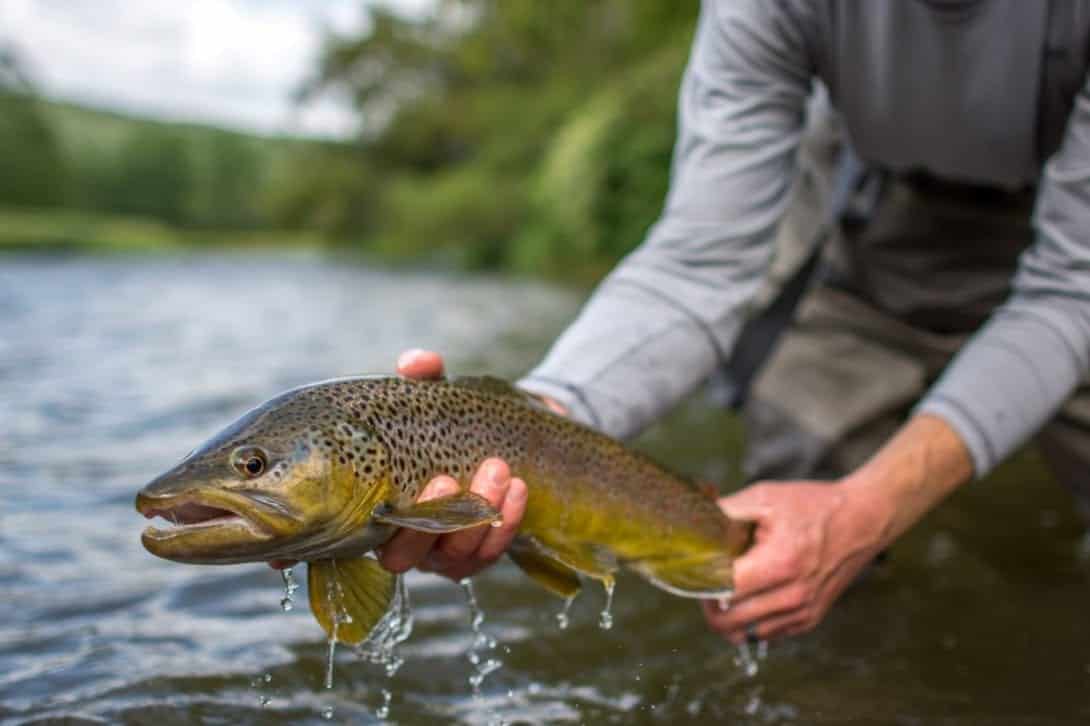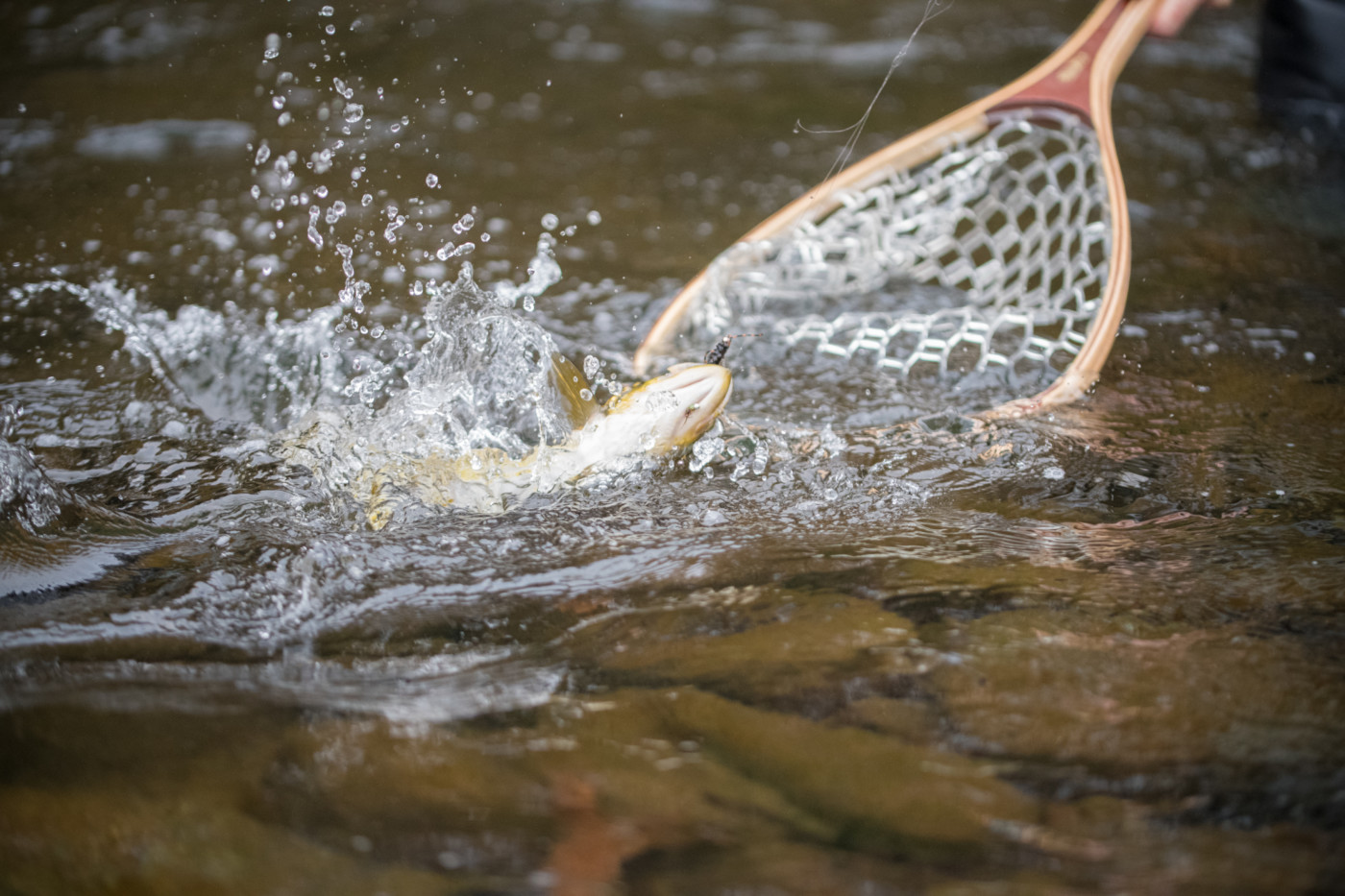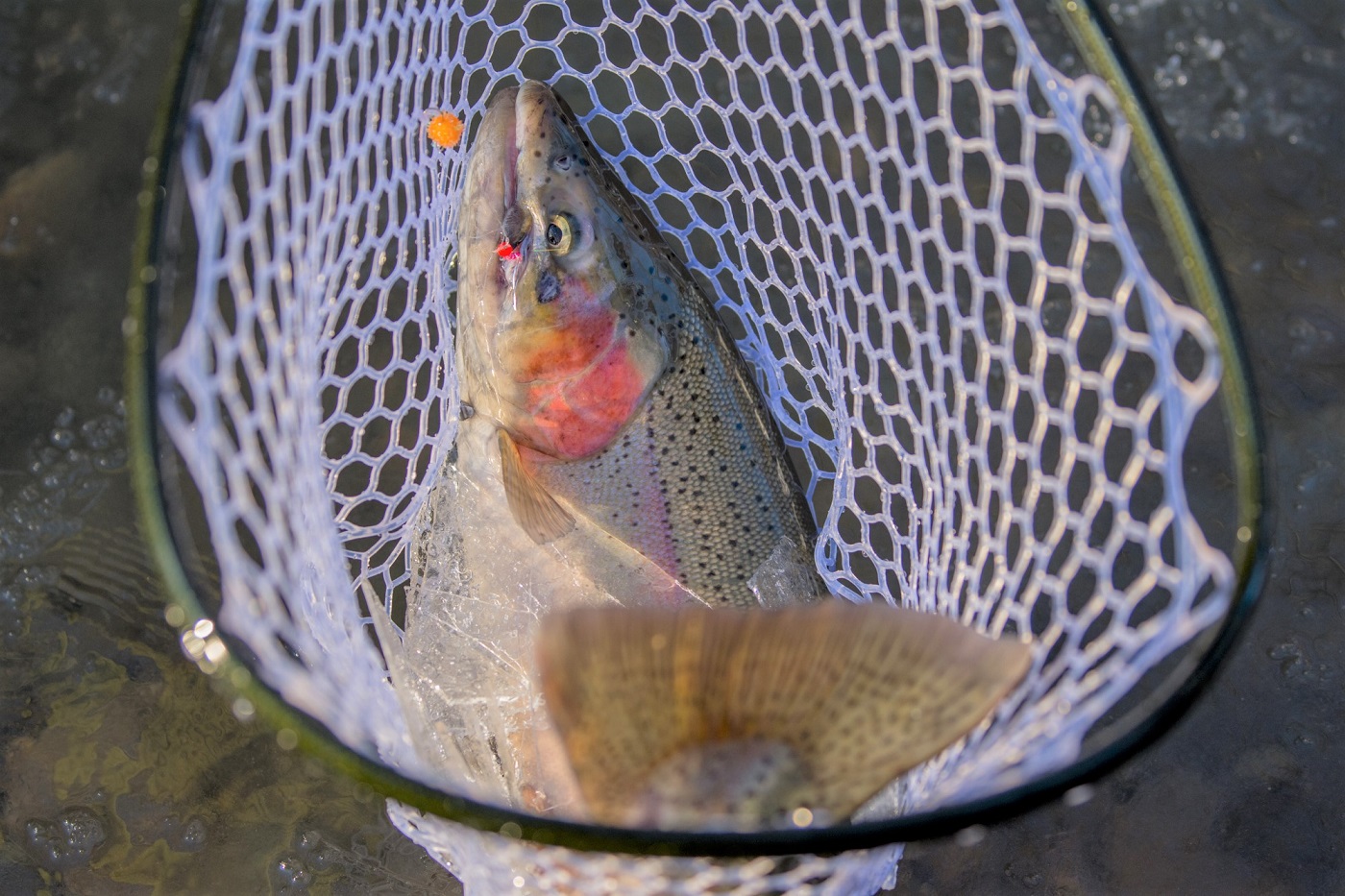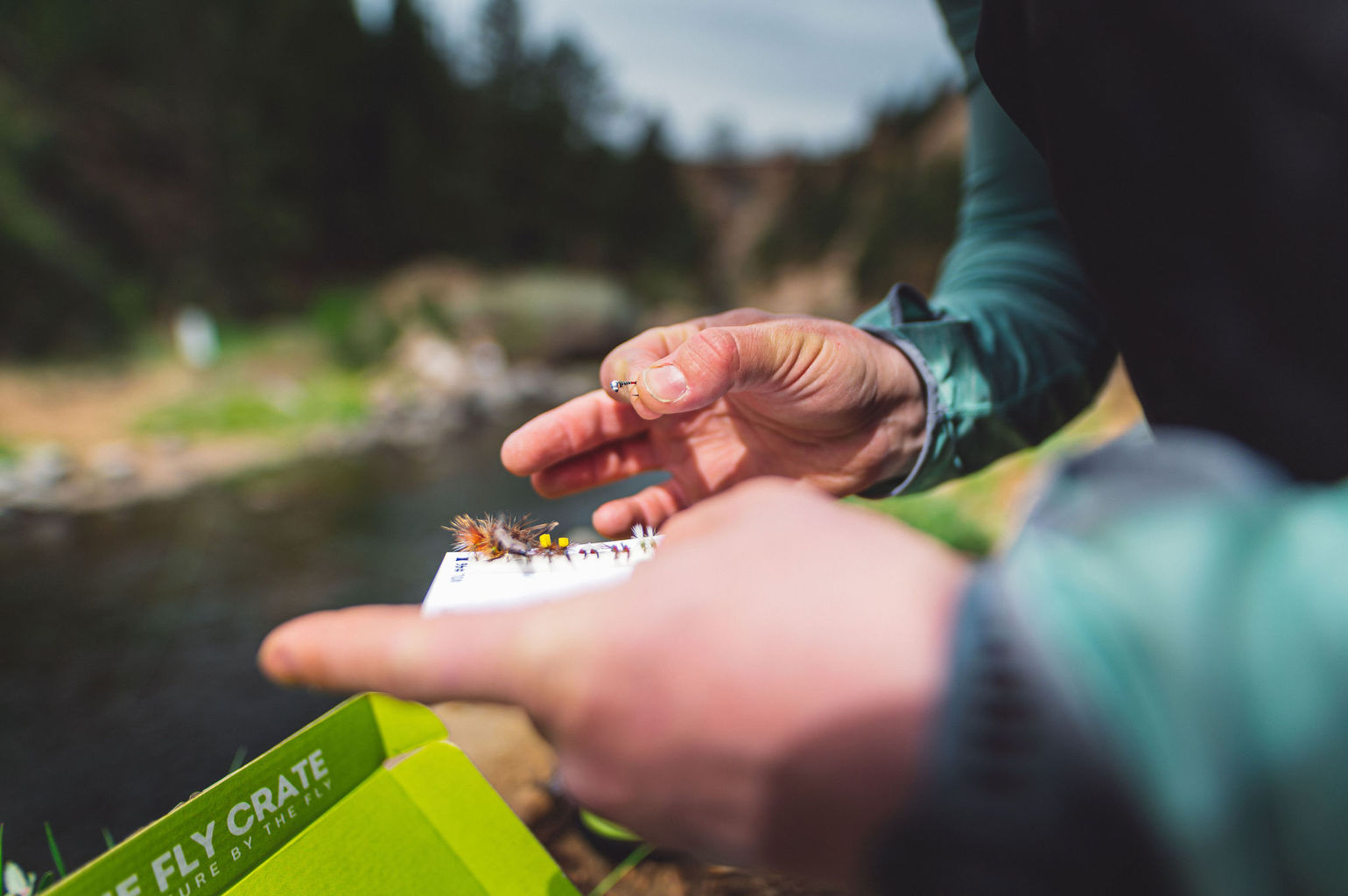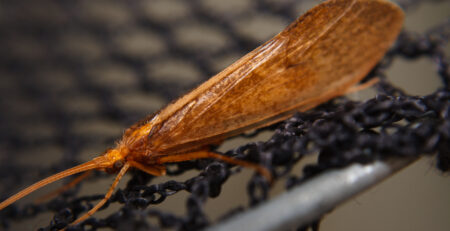Nymphing Flies to Trout in the Spring
Table Of Contents
- Where to fish in murky water.
- What nymphs should I use?
- How should I rig my flies?
- How to fish fast flows.
- Using weight in the spring runoff.
- Presenting flies to trout in high water.
Where should I fish when the water is murky?
Deep along the bottom. This is where the trout are – hugging the bottom. Believe it or not, the streambed impedes the flow of the water and slows currents.
Trout are like most creatures, they want to feed in the easiest way possible. During high flows and murky water, trout won’t be found in the fastest currents. Instead, they will go deep seeking out structure and soft pockets to take refuge in. Look for fallen trees, branches, beaver dams, and boulders that break the flow and provide eddies, side-pools, and soft pocket water. Casting around these areas and several feet below will be ideal fishing spots.
Seams, where bubble trails are funneled into, are also great places to find trout. Water seams form where slow water meets fast water, sometimes even forming a swirling pool. You’ll regularly find these off to the sides of the stream and large boulders.

What nymphs should I use?
The good news is that spring fly fishing allows you to be more broad in fly selection as fast flows kick up larger nymphs. For example, stoneflies will also be on the move during their migration from their rocky riffles to the sandy, gravel shores. They are ever-present in streams as their lifecycle takes years to reach maturity. Eventually the current will be too strong and some stoneflies may lose grip on the sandy bottoms churning them up into the water column. In larger bodies of water, stoneflies can reach sizes up to a size #6 hook.
- Worm flies: Size #10 – #14
- Stoneflies: Size #8 – #14
- Nymphs: Size #12 – #18
- Midge Patterns: Size #16 – #22
Start with your confidence flies first and then change things up when needed. Try pairing a large stonefly pattern such as a Pat’s Rubber Legs with a smaller midge pattern or your favorite tungsten beaded nymph. Egg and worm patterns can be incredibly effective as a lead fly in your tandem rigs.
How should I rig my flies?
There are a few ways to rig up your nymphs. One way we recommend is to place the heaviest fly as your lead fly, usually, the most bottom fly that will lead your multi-fly rig. Placing your heaviest nymph last will increase your sink rate and make casting easier. Sink rates are important because a faster sink rate means your flies get down quicker and stay within the proper feeding levels longer.
You can also add lightweight trailing nymphs below your heaviest fly, such as midges, worms, eggs, and soft hackled wet flies. Try using a non-slip loop knot to allow your trailing fly to swing naturally within the current behind the lead fly for a more enticing presentation.
Rigging up your nymphs also has multiple different options as well. With a quick Clinch Knot you can attach sections of tippet by either the eye of the hook or from the bend of the hook. I prefer the eye of the hook because I believe it will provide easier hook access to the fish, but have found no solid proof to not use the latter either. While you’re tying in your flies you can add additional dropper flies in a matter of seconds by leaving a long tag end. Rather than trimming tag ends from your knots, many anglers extend the tag end 6-inch to 12-inches long. It’s a shortcut to adding more sections and provides just as much leader strength.

How to fish fast flows.
After rain or snowmelt, water levels can rise rapidly and discourage many anglers to skip the river for a day. But, high water doesn’t always mean it’s unfishable. In fact, you can still have a great day out on the water when you know where the trout go to take refuge.
These higher flows also mean more food is drifting downstream. Floods will dislodge aquatic insects and worms that are usually not found regularly in the current. Beetles, worms, and ants living along the edges can also get pulled downstream with the current to awaiting trout hiding in the soft pockets along the sides.
Using weight in the spring runoff.
Nymphing in the spring may require using heavier weighted flies and a lead-free split shot to get your flies rolling along the bottom. Currents will be drastically slower along the bottom due to the friction of the water running against the riverbed. Trout will stay low hang within these slower currents to avoid the unnecessary consumption of energy while still being able to feed.
Try using a multi-fly rig with weighted nymphs. You’ll know when to add more weight if your flies are immediately swept downstream and don’t get enough depth. Take the weight off if your flies are constantly getting hung up on the bottom.
One of the best methods of using split shots is to put 2 splits and rarely just one. Just having one sinker pulls your nymphing rig down between rocks and boulders like an anchor. Use two sinkers instead. Attaching two allows them to work together and pull each other out of crevices that you would otherwise get stuck in. Water flow catches the sinkers at different angles and pushes them downstream with the current in a rolling, tumbling motion.

Presenting flies to trout in high water.
Even in the spring water temperatures can still be quite cold resulting in fish being lethargic. In these cold temperatures, Trout will refuse to go far to take any food. Expect trout to go a maximum of a foot or so, even less in faster flows. This means your flies need to practically hit them on the snout – make it an irresistibly easy meal. You may need to make a few extra passes before getting a good presentation. The good news is that spring runoff and the sediment it kicks up to provide you with additional cover and allow room for error. So you can pretty much be right on top of the fish and not spook them.
High flows can be dangerous to wade in, especially if water levels are still rising. Using a floating strike indicator will allow you to make casts from the streambank to pools out of arms reach. Leading your cast upstream several feet will be necessary, too. Nymphs will need time to sink to the proper depths before drifting through the area you want to fish.
Pools and side-eddies within fly rod reach give you the opportunity to tight-line your rigs through. We love this method. Keep a high stick for faster hook sets and avoid using more than two-rod lengths of line out on the water. Too much line out means your line control and ability to sense takes will be reduced. After your short cast, use your fly rod to lead your drift and keep your line slightly taut. You should be able to feel every pause and tap as your flies tumble across the bottom. Set the hook lightly whenever you feel the tension increase – it will either be a snag or a trout. Pretty good odds. At the end of your drift, let your line swing down and across until it’s completely straight. Sometimes trout will hit at the tail-end of your swing. Now repeat and keep moving.
Fly Fishing Made Easy 👍
Our Quarterly Fly Club ships 1,000’s of flies to anglers all across the United States. Receive curated fly assortments selected for the season with in-depth articles on how to fish them. Great for beginners to learn and for intermediates to discover new flies.

